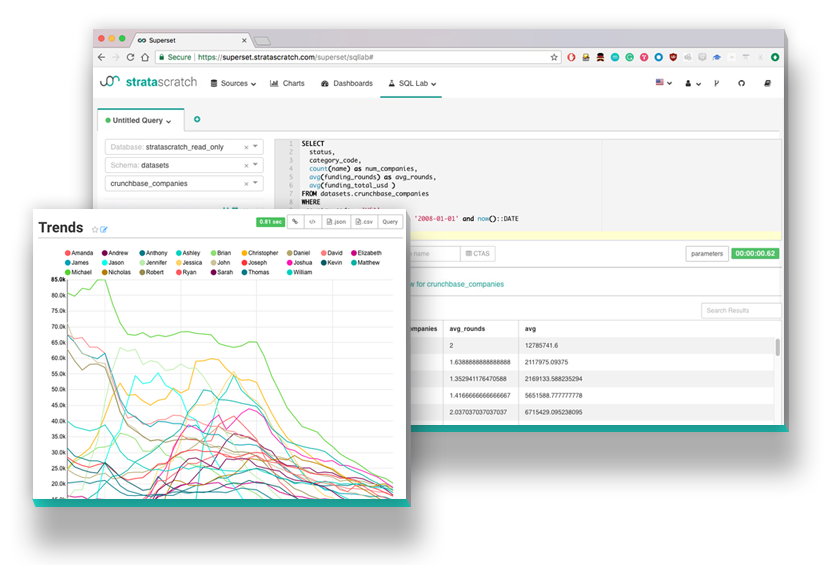What Coding Languages Do I Need To Know For A Successful Career In Analytics?
SQL, python, R — with so many languages and tools to choose from, which ones do I absolutely need to know and where can I start learning them?
When it comes to the world of analytics, you probably wouldn’t be surprised to learn that it can get quite complicated. One thing that is typical of most analytical jobs is that you will likely need to learn how to code, which generally requires learning a set of languages that are meant to perform specific analytical tasks.
But coding languages take a long time to learn. So which ones do I absolutely need to know to take me through my career in analytics?

Which Programming Languages Are Used The Most?
If you are getting into analytics, and considering it as a career, it’s not long before you can become pretty overwhelmed with all the technical platforms and languages you might need to learn to start your career. Therefore, if you are considering a career in analytics, one of the first questions you will probably have is — what coding languages do I need to absolutely learn? And which languages are “nice to haves”.
In this article, we’ll give you a rundown of our recommendations for the top programming languages to learn for a career in analytics. These are the languages that recruiters most often look for, and your best bet if you are trying to break into the world of analytics whether it be data science or business analytics. Let’s get started by outlining my top picks.
You can refer to the bottom of the article for our favorite resources
SQL
Minimum qualification for anything analytics
SQL is a scripting language that is used for accessing and manipulating data in databases. Databases are powerful tools for storing large amounts of data, and SQL is what is used to access and pull out that data, to manipulate the data, or to clean it up and reorganize it.
Data that is accessed by SQL is stored in a relational database. Each kind of data is stored in a table. A table has columns and rows to represent different properties about different things. With SQL, you can access these tables, find information that is relevant, compare information, or even manipulate it. Of course, all of these commands go deeper than the span of this article, but just know that this is an essential tool for many careers in analytics.

One other important consideration with SQL is that different companies use different types of databases. For example, you have HIVE, MySQL, postgres, and many others, all of which have different nuances to their syntax. The good news is that if you have a good grasp of SQL in general, you should have no problem adapting to the differences in these databases.
There are many great online SQL resources. For example, if you’re looking for a guide to teach you SQL from scratch, I like Mode Analytics. If you already know SQL (even if you’re just a beginner) and are looking for real-world practice problems, Strata Scratch, provides over 500+ SQL practice problems taken from real interviews from companies.
Python or R
A preferred qualification especially if you’re interested in a career in data science
Two very popular programming languages for data science and analytics jobs are Python and R. These are very adaptable languages, and as such can serve similar purposes, which may make it tough to decide between the two. Depending on which you are familiar with, both can be quite helpful, but it is important to be aware of the differences depending on which specific area of analytics you want to go into.
R is primarily used in research and has developed to be very useful for the purposes of statistics. As such, it is widely used by data scientists and statisticians for a variety of features related to statistics and data analysis. There is basically an option for almost any type of data analysis you want to do. R stores its data in a wide variety of ways (tables, matrices, vectors, etc.) which allow for objects such as regressions, coordinates, and more.
Python is more of an all-purpose programming language. It is a very large language and as such it has libraries to perform almost all the tasks that R can. Python is also a very powerful tool for machine learning and artificial intelligence, with libraries built specifically to perform these tasks.
I like to use python over R because of python’s great automation libraries and functions.
Of course, all of this may sound very complicated to a beginner. So just know that if you are considering a career in data science or analytics, Python and R can both be extremely helpful. They are both open-source languages with large and growing communities supporting them.
Datacamp.com provides great resources for both R and python.
Bonus: Business Intelligence Tools like Tableau and Plotly
A nice to have skill for any role in analytics

Business Intelligence tools (or BI Tools) are types of software that basically help you visualize your data. These platforms aren’t necessarily coding languages but will either have their own syntax or incorporate existing languages like SQL into their platform, or both. These platforms help you visualize and identify trends, to understand patterns, and develop implications based on those patterns. These tools essentially take the outputs from SQL and or python/R and add an interactive graphics component to help you serve up insights to your stakeholders and business partners.
One of the most popular BI Tools is Tableau. Tableau helps you to understand key business data points and make insights based on that data. It can connect to almost any data sources, including Salesforce, Google Analytics, and SQL databases. It presents all its information in a handy interactive dashboard, which also allows you to control and generate new information and insights.
Conclusion
These are our top choices of coding languages you should learn if you are considering getting into a career in analytics. Of course, analytics and data science are very broad fields. For this reason, before you go all-in on a certain programming language, consider more specifically which part of analytics and data science you are most interested in.
Do some research on the types of roles you really want to pursue, and then identify which of the programming languages above would be most valuable. I’ll guarantee that it will include SQL, python/R, and maybe a visualization tool/language.

Resources To Get You Started
The languages above all have extremely powerful capabilities within data science and analytics. All would be quite valuable for a career in analytics. No matter which direction you choose, knowing any of these languages would certainly open a lot of doors.
- Strata Scratch: over 500+ SQL and python practice problems from real companies
- Mode Analytics: a great tutorial for SQL and python, if you’re starting from scratch
- DataCamp: a resource to improve your python and R skills. Topics and modules are specific in nature and require you to have some background in python or R.
Originally published at https://www.stratascratch.com.
You're following Towards Data Science.
You’ll see more from Towards Data Science across Medium and in your inbox.
WRITTEN BY





No comments:
Post a Comment